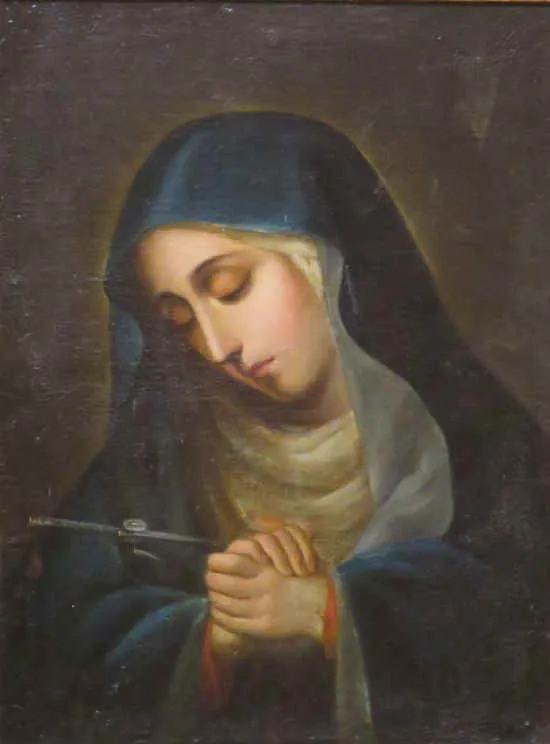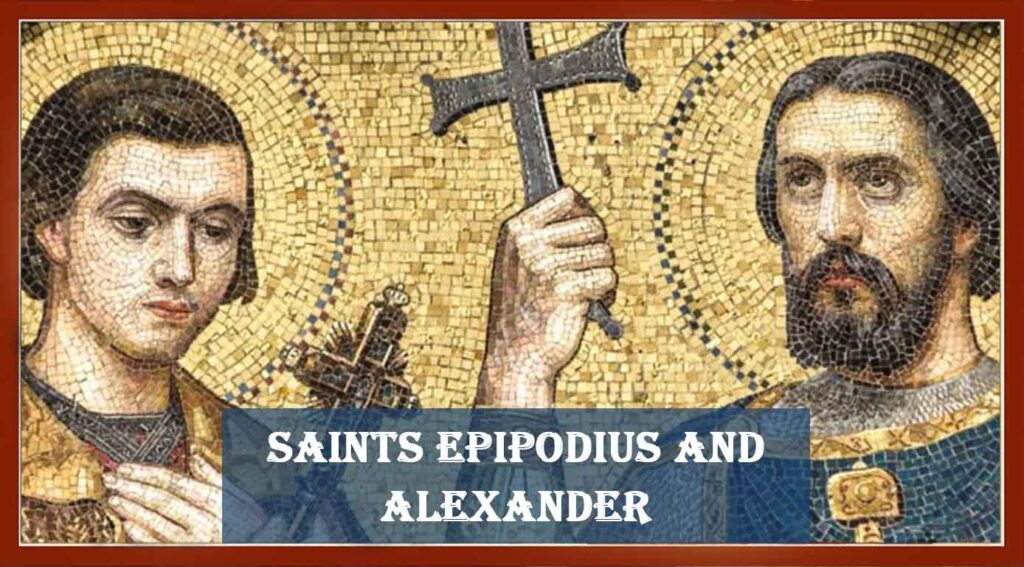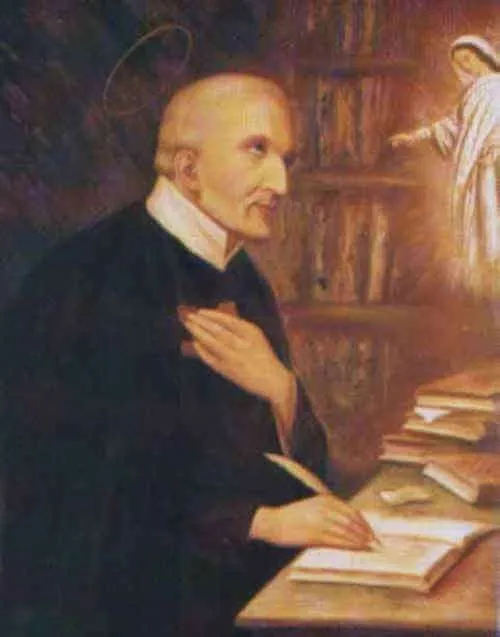The roots of today’s memorial can be traced back to the New Testament, but the memorial wasn’t celebrated as a universal feast of the Church until 1814. Prior to that, devotion to Our Lady of Sorrows first emerged during local celebrations around the Mediterranean in the eleventh century.
In 1233, seven devout men in Florence each had a vision from the Blessed Virgin Mary, inspiring them to form a religious community that would later be known as the Servites. Around the year 1240, these same men received another vision of the Mother of God, accompanied by angels. She informed them about their mission, provided them with their habits, presented their rule of life, and personally founded their order. In that apparition, they were instructed to spread devotion to the Seven Sorrows of Mary, which became one of their central missions. Through the efforts of the Servite order in the subsequent centuries, the liturgical celebration honoring Our Lady of Sorrows gradually expanded.
In the late thirteenth century, the traditional prayer, Stabat Mater (Standing Mother), was composed and quickly became well known. This prayer emphasizes the deep sorrow in Mary’s Heart as she stood before the Cross with tremendous strength and motherly compassion for her Son.
In 1809, against the Pope’s wishes, Napoleon decided to annex the Papal States to the French empire. After Pope Pius VII excommunicated Napoleon, the emperor arrested the pope and imprisoned him from 1809–1814. After Napoleon’s defeat in 1814, Pope Pius VII was released. In gratitude for the protection granted to him and to the entire Church through the Blessed Mother’s intercession, the pope extended the feast of Our Lady of Sorrows to the entire Latin Church.
Traditionally, the Memorial of Our Lady of Sorrows commemorates the seven sorrows in the Heart of Mary as recorded in Scripture:
- The prophecy of Simeon (Luke 2:33–35)
- The flight into Egypt (Matthew 2:13–15)
- Loss of the Child Jesus for three days (Luke 2:41–50)
- Mary meets Jesus on His way to Calvary (Luke 23:27–31; John 19:17)
- Crucifixion and Death of Jesus (John 19:25–30)
- The body of Jesus being taken from the Cross (Luke 23:50–54; John 19:31–37)
- The burial of Jesus (Isaiah 53:8–9; Luke 23:50–56; John 19:38–42; Mark 15:40–47)
The Blessed Virgin Mary first learned about the sword that would pierce her heart while presenting the Child Jesus in the Temple with Saint Joseph on the eighth day for His naming and circumcision. “Simeon blessed them and said to Mary His mother, ‘Behold, this child is destined for the fall and rise of many in Israel, and to be a sign that will be contradicted (and you yourself a sword will pierce) so that the thoughts of many hearts may be revealed’” (Luke 2:34–35). Simeon’s prophecy was the first piercing of her heart because it is the first scriptural record of Mary knowing that her Son would suffer. The next six traditional sorrows paint the developing picture of the fulfillment of that prophecy.
As we honor the Blessed Mother’s Sorrowful Heart, it’s important to understand that a “sorrowful” heart is not the same as a “sad” heart. Theologically speaking, sadness results from a form of self-pity, or an unhealthy attachment to something that was lost. Sorrow, on the other hand, is one of the Beatitudes, and therefore one of the holiest qualities we can possess. “Blessed are they who mourn, for they will be comforted” (Matthew 5:4). To “mourn” is to have a sorrowful heart. In this context of the Beatitudes, a heart that mourns is a heart that loves. Mourning, or holy sorrow, results from a heart that witnesses sin and grieves over it. In the Blessed Mother’s case, she witnessed the brutal treatment of her Son, His rejection, suffering, and death. She did not despair as she witnessed this. She did not become angry. She did not succumb to confusion and frustration. She did not withdraw into herself in self-pity. Instead, she reacted with the empathetic love that flows from the holiest of hearts. She felt holy sorrow—not so much because she felt bad for her Son, but because she grieved over the sins that inflicted that suffering, and longed to see those sins redeemed.
As we commemorate the Sorrowful Heart of Mary today, it is an important opportunity to reflect upon your own sorrow. Is your sorrow self-centered, dwelling over the wounds you feel? Or is it selfless—meaning, does your sorrow extend to others, grieving in a holy way over the sins you witness? When our sorrow is holy, we are filled with compassion and spiritual empathy. The word “compassion” means “to suffer with.” The Blessed Mother, united with her Son’s Sacred Heart, suffered with her sinful children as she watched their sins crucify her Son. She harbored no hate as she witnessed those sins, only an indescribable longing to see the grace of her Son pour forth upon those who had rejected Him and sinned against Him.
Ponder, today, the holy and Sorrowful Heart of the Blessed Virgin Mary. As you do, try to understand her heart more fully. The only way to comprehend the depth of love in her heart is through prayer. In prayer, God will reveal her immaculate love to you and inspire you to imitate her more fully, turning from all selfishness to more fully embrace selflessness, so as to share in the perfect love shared between this immaculate mother and her divine Son.
Source: https://mycatholic.life/saints/saints-of-the-liturgical-year/september-15-our-lady-of-sorrows/








